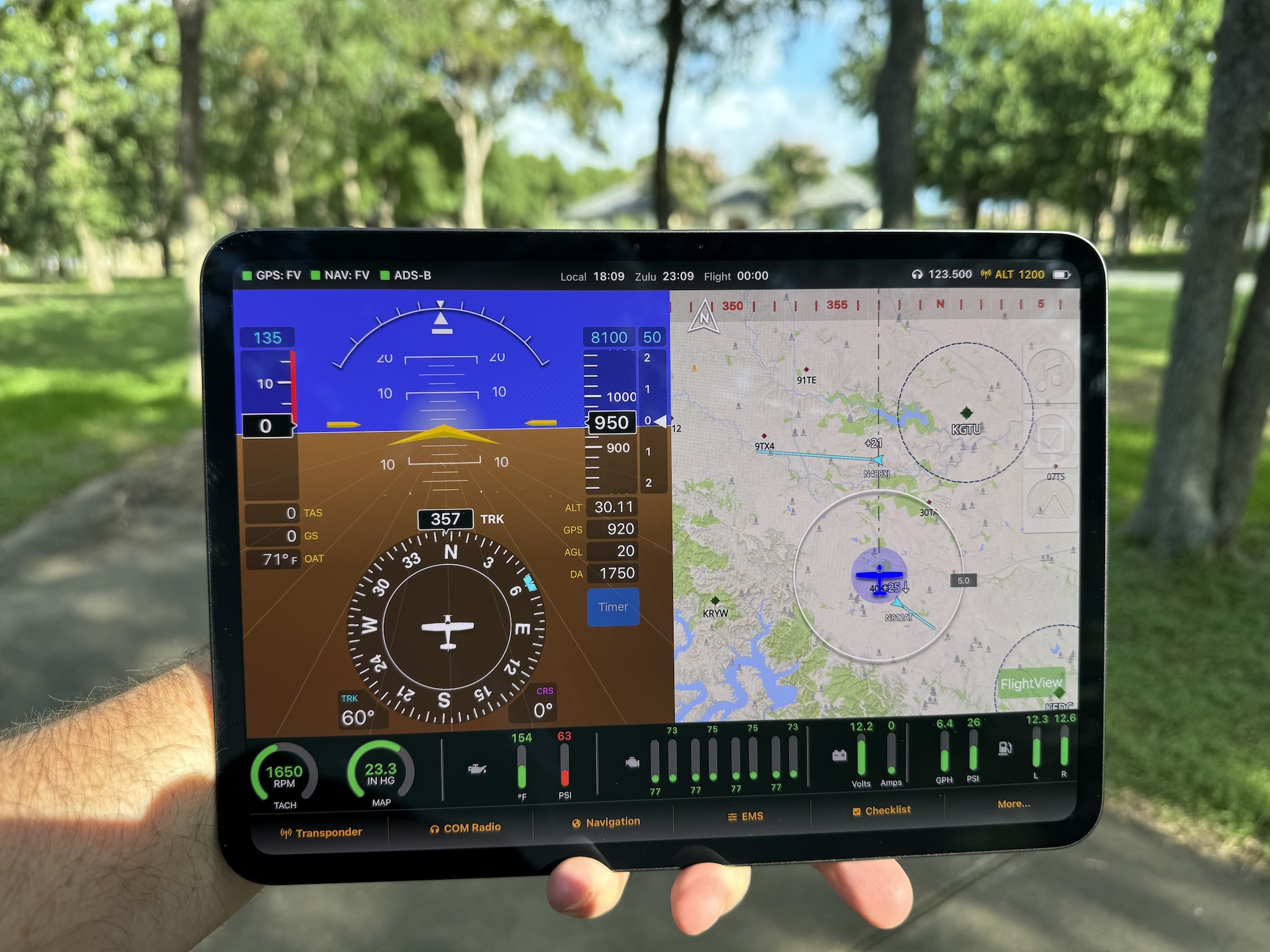Last year at Oshkosh I demo’d a new version of the firmware for FlightView that radically improved system performance and helped guarantee system stability. At the time, I figured the new code would be ready within a few weeks. A few months at the outside. Well…. I’m happy to announce that version 3.0 is now available. It took a bit longer than expected, but I think it’s worth the wait. Here’s what’s cool about v3:
New Software Architecture
v3 is built using a “micro-services” architecture. Rather than having all the functionality tied up in one or two processes, v3 breaks out almost every function into its own independent “service”. The operating system manages the services, starting them up in the proper order and restarting them in the event of a crash. This means that a bug in one service can’t bring down the entire system. This makes FlightView more bulletproof than ever before.
The new architecture also makes it easy to add new functionality. Rather than having to carefully code support for a new device into a complex, monolithic application, v3 allows us to code up a simple stand-alone service module. As an example, we’re about to release support for the uAvionix TailBeaconX transponder / ADS-B Out system. Building the driver service took a few hours rather than a few weeks.
Improved Wifi Connectivity
v3 introduces the option of using the 5 GHz Wifi band, which is much less crowded than the 2.4 GHz band. This makes for smoother data delivery and less interference from other Wifi accessories in the aircraft. We’ve added the ability to set a Wifi password (standard WPA2 encryption) which makes it even less likely that your system will be hacked at 10,000′. If you do opt to use the 2.4 GHz wifi range you can now select the channel.
Wired Ethernet Connectivity
We’ve had a few users experience intermittent interference with the Wifi signal between the FDC and their iPad(s). To overcome this, we’ve added support for wired connections to iPads using Ethernet. This requires a small hardware modification to the FDC to add the Ethernet port and either an Ethernet-to-Lightning or Ethernet-to-USB-C adapter with a power input. The hardware costs about $50 for an iPad that uses a USB-C input (the current Mini, Air, and Pro versions) and about $150 for a model that uses a Lightning connector.
Faster, Easier Updates
The current firmware update process has some significant limitations that make it hard to install major updates. v3 overcomes those limitations by adding a second update path. Simply download and copy an update file to the root directory of a USB thumb drive and connect it to your FDC or USB hub. The new update process will replace individual services, usually without requiring a restart.
Better Logging
Logging is critical for finding and fixing bugs. The v3 logging system is lightyears ahead of the old system. If you run into an issue, you can monitor the real-time log message flow from the Diagnostics page. To capture the full log output just connect a USB flash drive to your FDC or USB hub. Logs include detailed timestamps and service identifiers, making it easy to track down issues.
Significantly Improved System Performance
The new architecture has allowed us to fine tune each service, reducing the overall CPU and memory demand of the system. This makes for a more stable system and also means we have plenty of resources available for future features. Changes at the operating system level lock the CPU cores in at an optimal clock rate (slightly under-clocked) for consistent performance.
Lower Operating Temperature
The same changes that give us better performance also reduce the operating temperature of the entire FDC, extending the life of all components.
Firmware v3 is now shipping on all new FlightView systems, and free upgrades are available to all existing FlightView users. If you have a FlightView system running on an older version, please get in touch and we will help get your system updated to the latest and greatest.
If you are running firmware v3, be sure you’re running the v3 compatible FlightView iPad app, currently available from the TestFlight app. Older versions of the app will display all flight and navigation data but may not be able to control some features. The v3-compatible app will move to the main App Store in early July.

